Are you a Quiet Speculation member?
If not, now is a perfect time to join up! Our powerful tools, breaking-news analysis, and exclusive Discord channel will make sure you stay up to date and ahead of the curve.
Introduction
Every TCGPlayer listing represents a wealth of information that is important to be able to understand in order to buy, sell or trade cards. There is no one most important metric on TCGPlayer, they all play an important role and need to be broken down in order to build a clear picture of what a card is really worth.
This first article will focus on the surface level metrics of TCGPlayer: TCG Median(Mid), TCG Low, TCG Market Price, and TCG Direct Low. Each of these metrics is independently important but when we analyze the spreads between them we can see a clear picture of a card's price.
TCG Median
TCG Median is a metric based on the average price of a listing for a card on TCGPlayer. The metric has gone through a very tumultuous history as it was rife for manipulations by stores who wanted to list cards for obscene prices. This inflated TCG Mid and reduced overall confidence in the metric. This was especially apparent during the Reserved list spikes from 2016 to 2018 as Mid started to represent a meaningless number for many high-end cards.
While confidence may be shaken in blindly using Mid for pricing, it is still useful to understand what it represents. As the metric combines the average price of listings for a card it can help us understand the average listing rather than a specific listing for a card. This gives us insight into how sellers, as a whole, feel about a card, which is important when combined with metrics that look at sales.
TCG Low
TCG Low is a deceptively simple metric that measures one very important element, the cheapest you can buy a card. Low has also followed a similar fate to Mid as it was abusable in the opposite way Mid was, by listing a card cheaply someone could manipulate the price for a short amount of time.
These days, Low cannot be found on a cards listing page but it is still relatively easy to calculate. All you need to do is filter for Near Mint and Lightly Played then sort by cheapest without shipping and taking the cheapest price and ignore shipping. Usually, it is important to factor in shipping when actually using low to compare to other metrics. This metric can still be found in the seller portal and through many trading apps using the TCGPlayer API.
TCG Low is often referenced when looking to buy or sell cards as it generally represents the cheapest a card can be purchased for on the internet. Many online buyers blindly buy collections for 70% of low, using the metric as it is usually relatively close to what a card is worth. Low is mainly used to compare to other metrics in order to see how desperate specific sellers are to move a specific card.
TCG Market Price
This metric is the most opaque of the four main metrics that TCGPlayer makes readily accessible. TCGPlayer says that this is an amalgamation of recent sales of a card. It is clear they don't want to divulge too much information about how Market Price is calculated so it isn't abused like Mid or Low. This lack of transparency makes market price a little more difficult to explain as it isn't based on listings that can still be viewed.
One thing that we do know about market price is that it won't shift if new sales don't happen. This is important to think about when trying to figure out why a market price is so high compared to Low or Mid. Another factor that complicates market price is its derivatives. When viewing the seller portal several "market prices" can be viewed and used depending on what condition you are viewing.
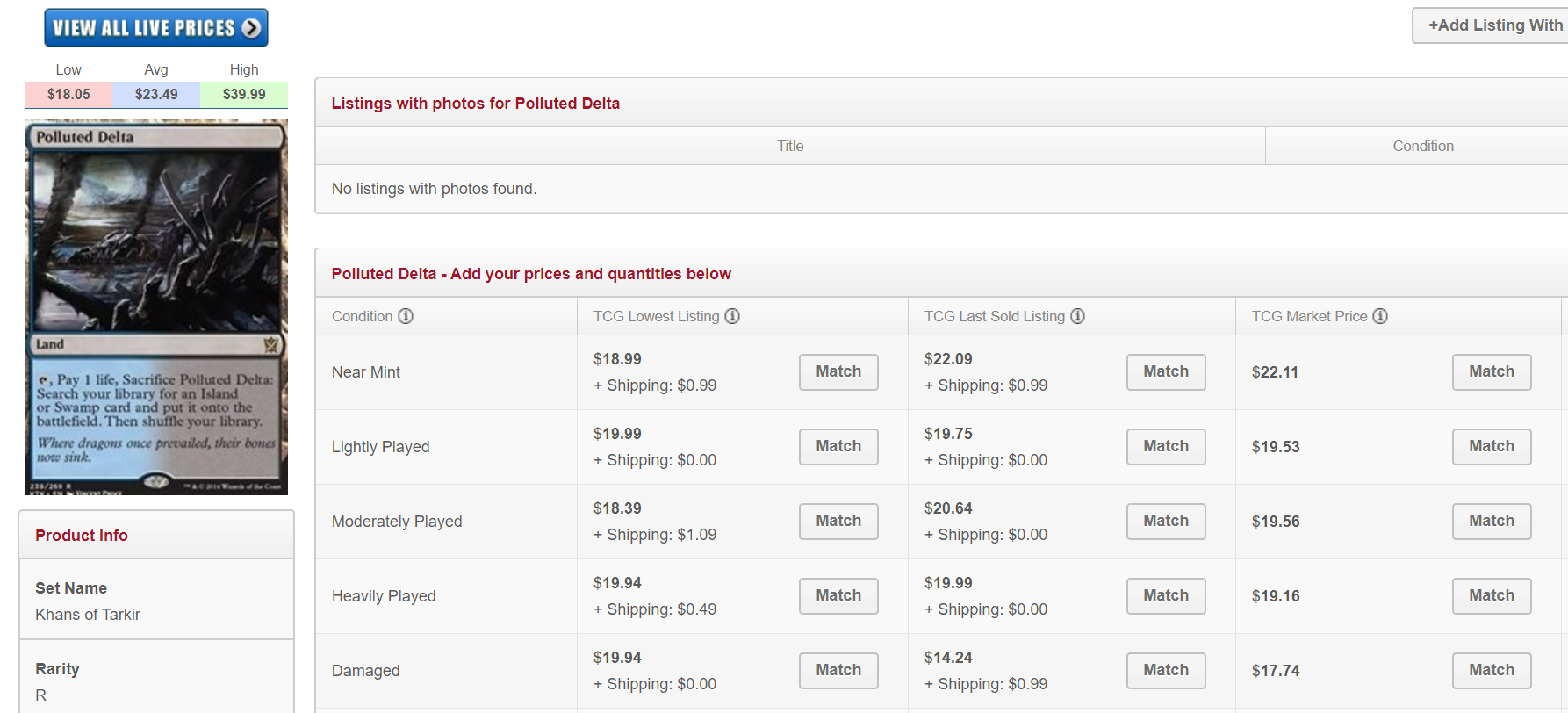
As you can see there are several market prices listed depending on the condition of the card. This is unlike the TCGPlayer listing page which only shows one market price:
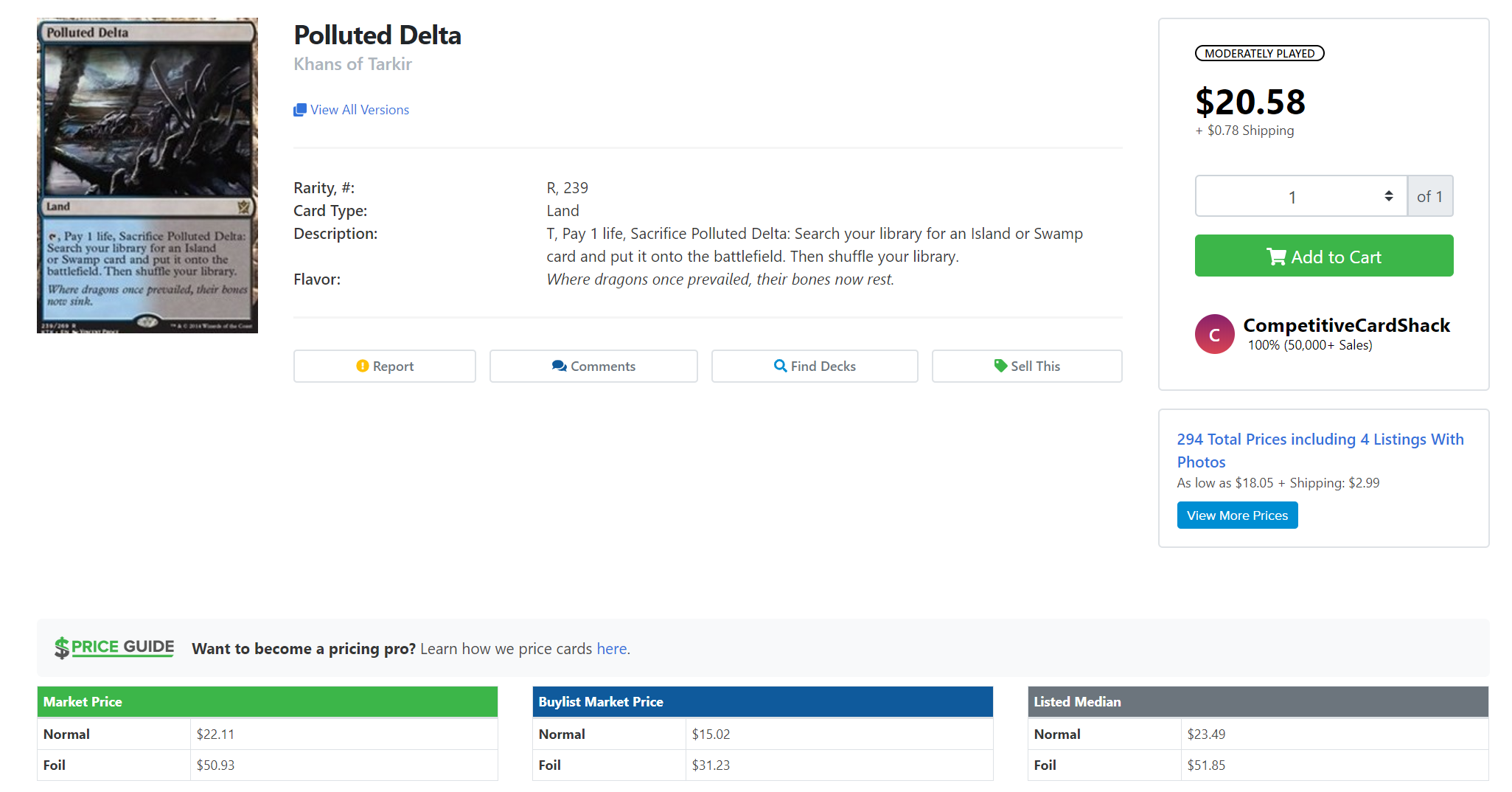
This difference shows that on the listing page only the Near Mint market price is listed. We can then assume this data point is only based on Near Mint listings that have sold. When using the market price to compare to other metrics, I will be using the Near Mint market price unless otherwise stated. This metric is the most visible of all 4 metrics as it comes up first when searching for a card. This means that it is commonly used when trading but it is less common when buying or selling cards as it does not reflect actual current listings.
TCG Direct Low
This metric may be new to people who don't have access to TCGPlayer direct but it is still important to understand as it can signal market inefficiencies or mistakes. The easiest way to view TCG Direct Low is by using the Direct filter in order to only see items that can be sold via direct. It is important to understand that this metric can fluctuate as different conditions become out of stock on direct. Just because a condition isn't listed within the direct filter doesn't mean that it isn't in stock, even though that is often the case.
As more conditions go out of stock on direct the price will generally go up. This means that we need to consider the number of conditions in stock on direct before using the spread between Direct Low and another metric. Direct Low is usually 10-20% higher than the absolute low, this is mainly because only larger stores can list on direct. As most larger stores are listing on direct it can indicate whether there is a big price discrepancy between larger stores and smaller ones.
Market VS Low Spread
To begin understanding spreads I will break down how to use the information from Market Price and Low in order to better understand a card's price. Let us start by breaking down a simple example:
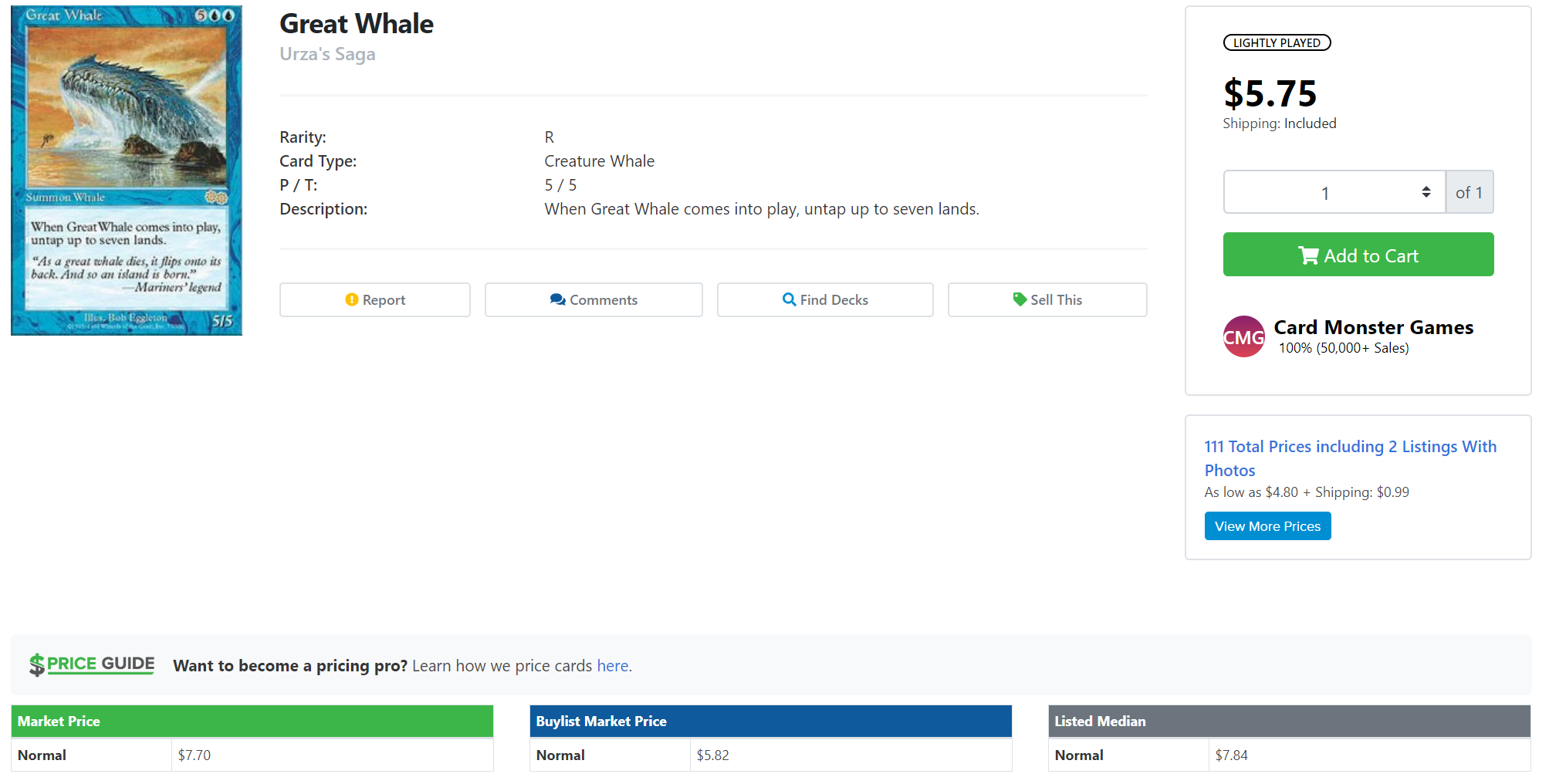
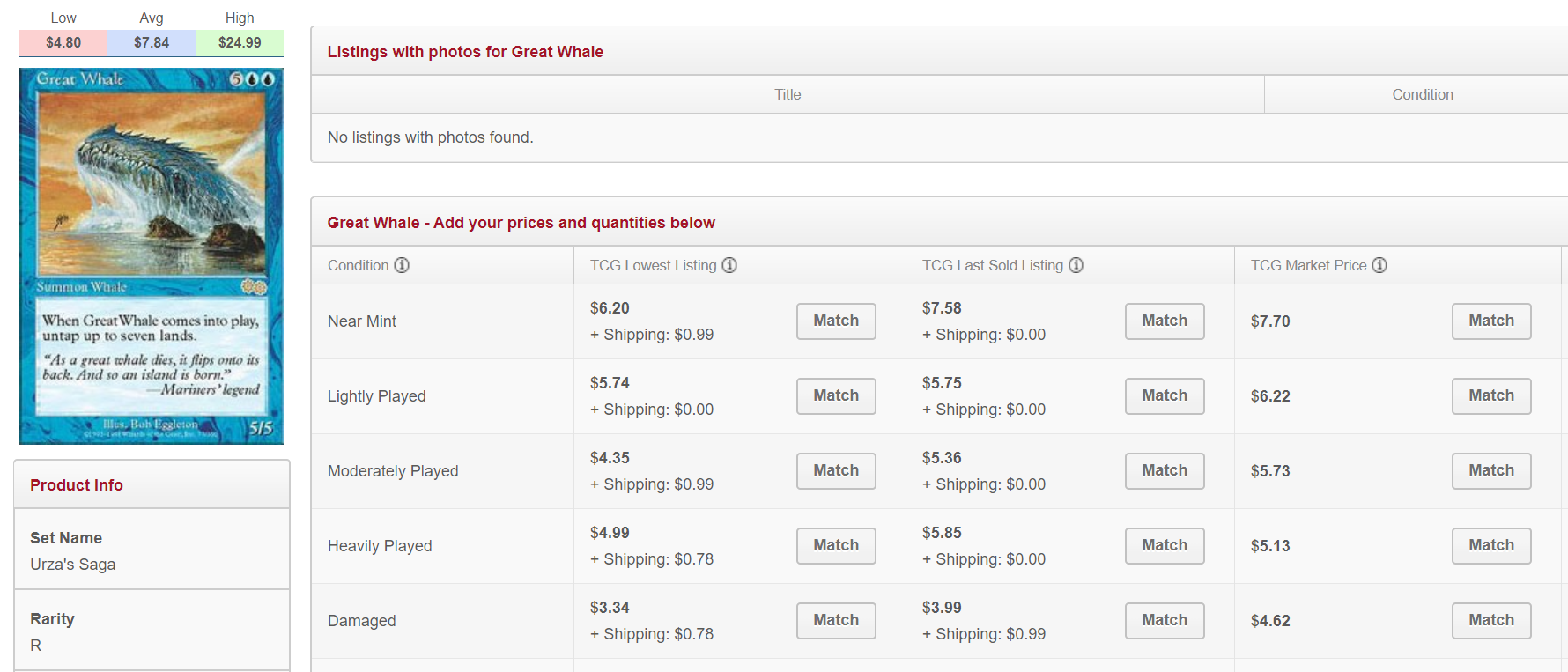
From this information, we can see that there is a large spread between TCG Low and Market price. This could be because the card is old it has a sizable premium for copies that are Near Mint. Looking at the lowest listings for both Near Mint and Lightly Played we can see that this condition difference describes a sizable portion of the spread but there is still some left unexplained.
We can see that the last sold listing for Near Mint is close to what the actual market price is, but the Near Mint Low is almost 50 cents less than the Market Price. This drop in price for both conditions could signal that this card is stagnant and difficult to move. This is reflected in the MTG Stocks graph which shows a slow but steady drop from Mid 2018 until now.
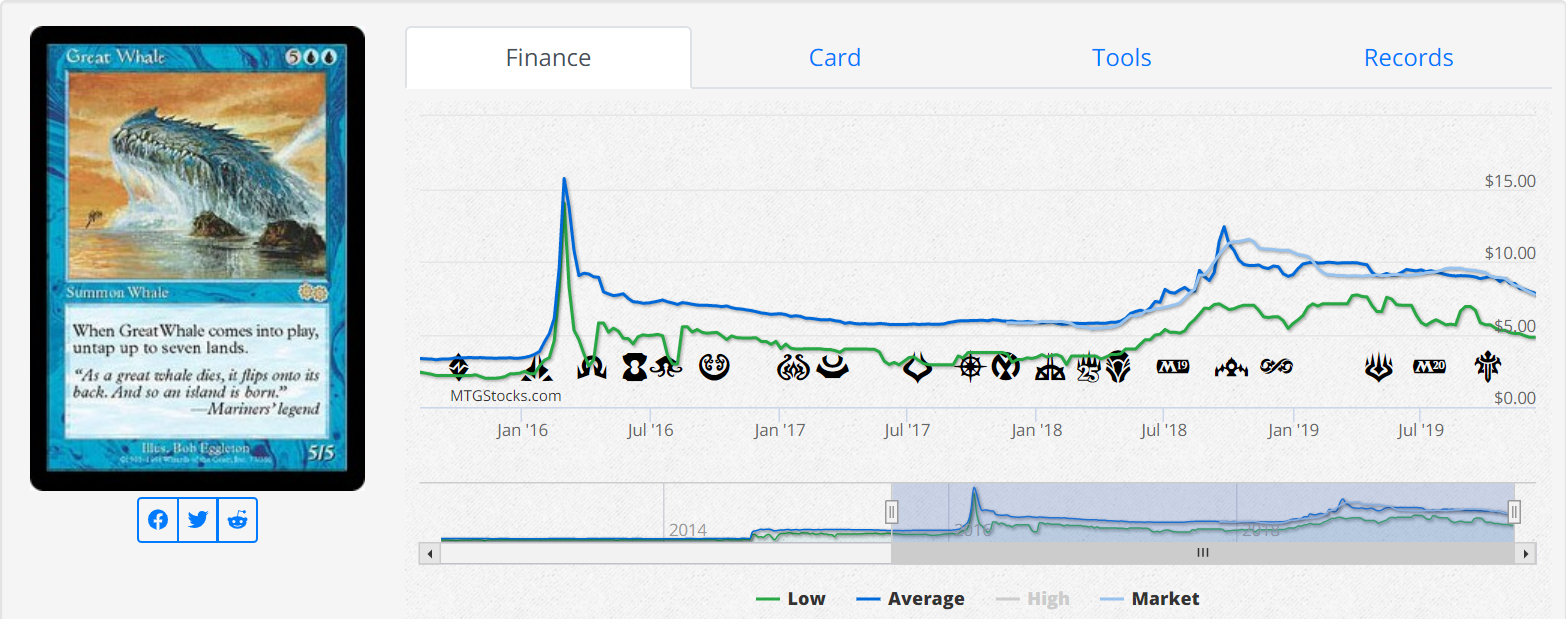
This single analysis doesn't prove the importance of the TCG Low VS Market spread but it does illustrate how we can use it to better understand trends.
Wrap Up
This introduction has just begun to scratch the surface of spread analysis. In the next article, I will analyze the impact of TCGPlayer Direct and how it can signal trends within the market. I will also be looking at a few more obscure TCGPlayer Metrics like last sold listing and buylist market price. I hope this helps people better understand metrics and what they are based off.


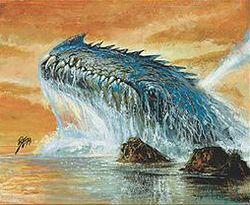



I just sat and listed approx 200 or so MM15 and MM17 ounces to TGCplayer. I have had my theories about these variations, and coming across this article tonight is rather ironic. Very intuitive and I believe the logic is sound. Thanks for the content. I would love more!